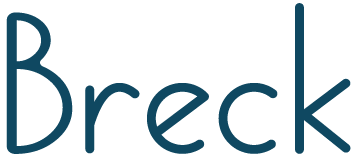
Avoiding Proposal Mistakes
Reaching the Finish Line: Avoiding Proposal Mistakes
Writing a winning response to a federal government request for proposal (RFP) is a complex process involving disparate elements: teamwork and individual effort, planning and last-minute pushes, structure and creativity. The result is a carefully crafted proposal that wins the contract. However, with many moving parts, proposals can go off the rails at almost any stage in the process. What mistakes could be standing in the way of a win?
At the Beginning: Starting Too Late
Waiting until the final RFP has been released to start working on your response may seem like the most efficient use of resources. However, this conservative thinking could lock you into what could be a tight timeframe.
Work can begin as soon as you identify an upcoming bid that looks like the right opportunity for your company. Frequently, the government will release a draft RFP that you can reference for specific requirements. Likewise, for re-compete situations, a previous RFP can provide direction. This extra time can be effectively used to develop your proposal solution, create outlines, confirm your team and gather their data, concept graphics, and write past performance profiles. If the draft requirements seem incomplete or contradictory, prepare questions early. Having this extra time transforms your proposal sprint into a manageable long-distance—and hopefully winning—run.
At the Beginning: Non-Compliance
Compliance is the single most critical ingredient to winning proposals, and it affects every part of your document. While compliance with page count, font size, and margins is obvious, compliance also encompasses the requirements of the performance work statement or statement of work, informing the overall structure of your proposal. Careful analysis of the RFP (“shredding”), planning, outlines, and compliance tracking spreadsheets are all tools to use at different stages of the process to ensure every aspect is in compliance.
At the Beginning: Lack of Strategy
Proposal writing requires compliance, but it also takes strategy and creativity. When confronted with a deadline, it can be tempting to jump directly into writing the required sections and volumes. However, a winning response requires big-picture thinking. What is your strategy that informs your response? What are your win themes? What story are you telling? Take some time while analyzing your RFP to flex your creative muscles. Strategic planning will ensure a cohesive proposal instead of a choppy narrative.
In the Middle: Requirement Parroting
Using key words and phrases from the RFP is a good idea, and a way to achieve compliance. However, simply repeating or even rephrasing requirements or tasks is not the best approach. You may fill up page space, but your content will not be enough to convince an evaluator. At best, this parroting will make it seem as if you do not have a complete understanding of the work requirement or of how you will approach it. At worst, it appears that you are bluffing your way through the proposal and hoping that no one will notice. It is important to work with subject matter experts and writers to develop real answers to requirements.
In the Middle: Not Differentiating Yourself
When worrying about compliance, technical details, formatting, and data calls it can be easy to forget about the most essential duty of your proposal: selling yourself. What value does your company offer? How can you provide innovative solutions? Your selling point—for example, experience, value, or skilled personnel—can be a resonating theme woven throughout your proposal content. Avoid getting so bogged down in the details of the proposal that you forget emphasize your company’s value.
In the Middle: Sluggish Writing
When writing for a proposal, writers can find themselves slipping into a passive, jargon-based language with a lot of extraneous phrases and bloated phrasing. Keep your proposal writing sharp, concise, and active. Additionally, you may notice that a certain section of text may work better translated into a graphic image. This serves the dual purpose of breaking up the page for the reviewer and potentially conveying your ideas and approach more effectively. Your solutions will stand out, and your page count will thank you for trimming the bulk.
At the Finish: No Final Edit
The planning process should build in time for final editing and proofreading right after gold team review and before final production to catch any last inconsistencies, typos, or grammatical mistakes. Are you dealing with acronyms in a consistent way by defining once, then using the abbreviation? Do you maintain a consistency and formatting checklist to help ensure a clean, uniform response? The last day can be chaotic if last minute questions & answers or a change in personnel throw a wrench in your carefully built proposal. Keeping checklists that help ensure a final polish will keep your sanity in check before proposal submission while also potentially being the difference between getting a great evaluation or being tossed aside.
Every step of the proposal process, from management to writing to editing, poses a different set of challenges. Dealing head-on with potential missteps ahead of time will improve your process, but needs careful planning. If your company could use assistance with proposal management, writing, or graphics, our experts can provide the help you need at each step. Contact Breck Inc. for more information on how we can help.
